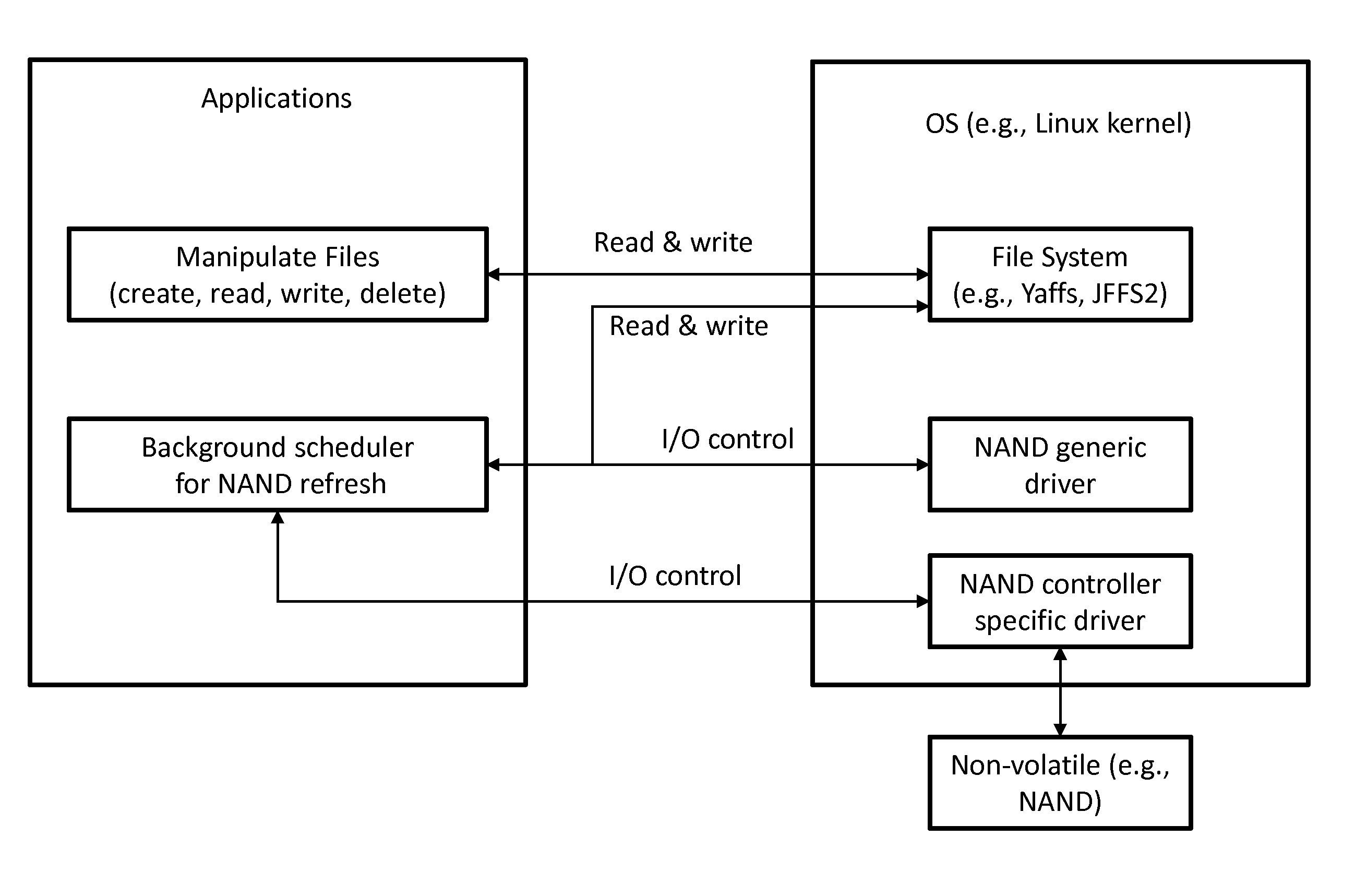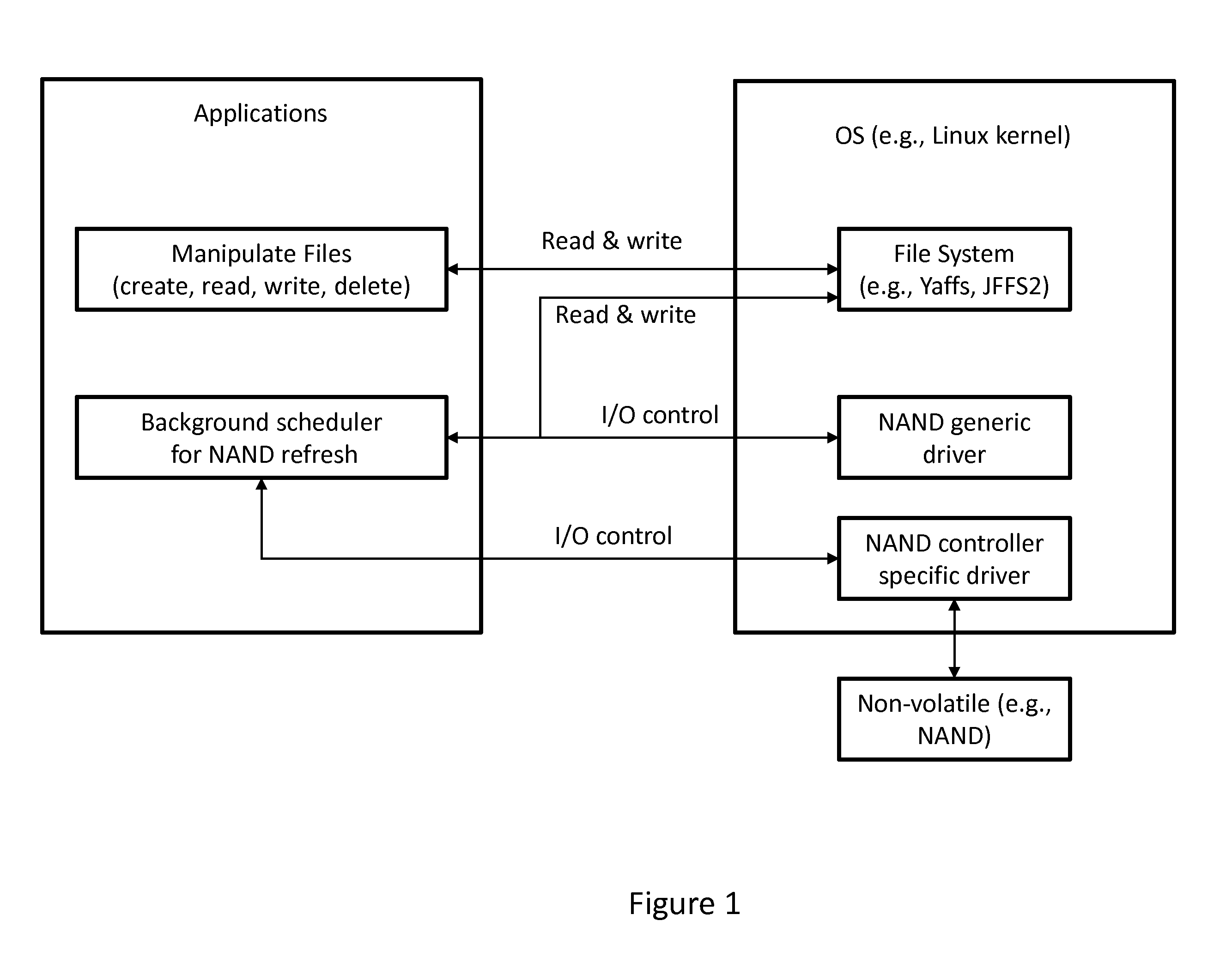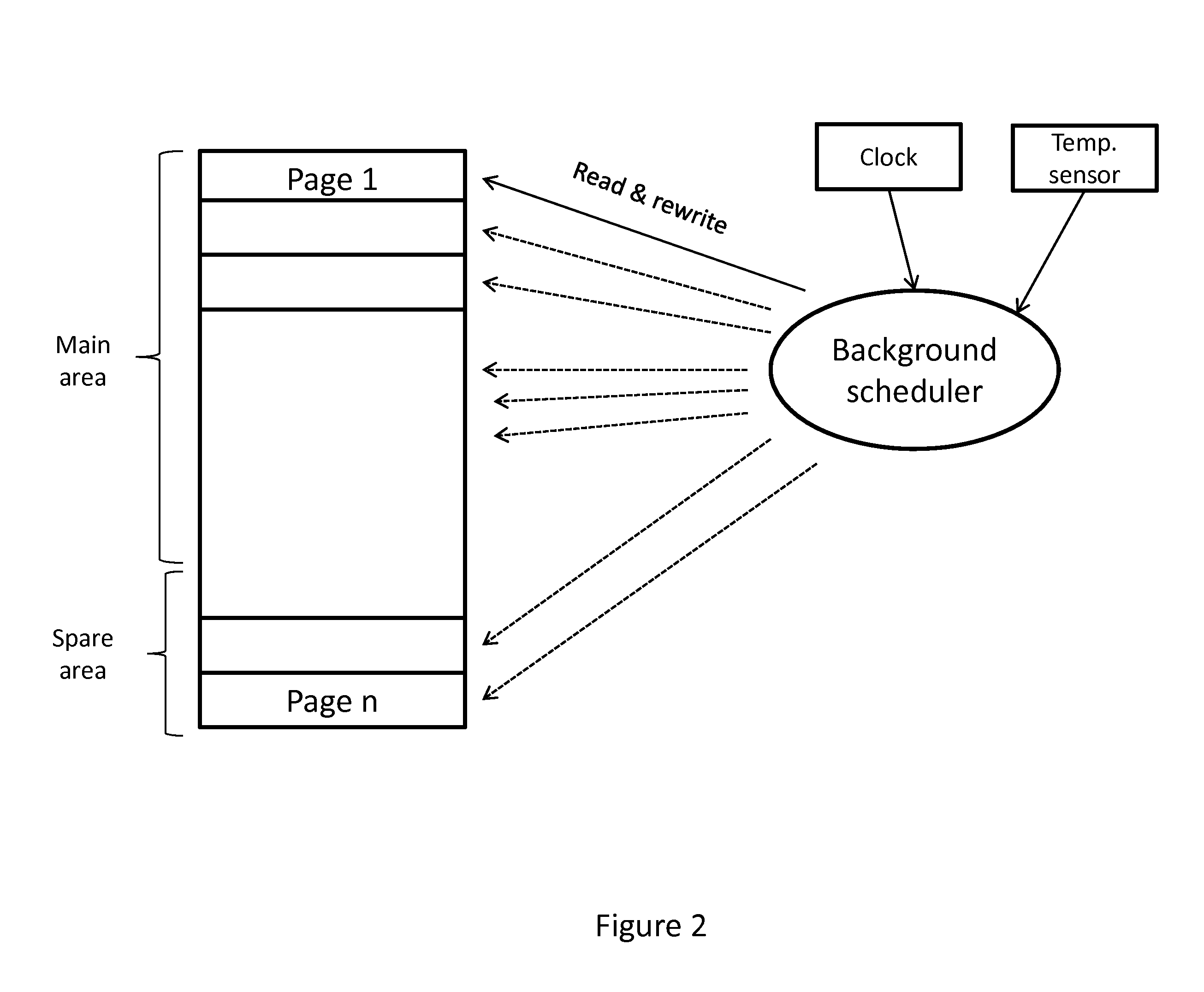System and Method for Autonomous NAND Refresh
a technology of autonomous nand and system, applied in the field of system and method for autonomous nand refresh, can solve the problems of data corruption beyond the capability, block invalidation, steep decrease in the reliability of data stored in the memory,
- Summary
- Abstract
- Description
- Claims
- Application Information
AI Technical Summary
Problems solved by technology
Method used
Image
Examples
Embodiment Construction
[0011]Turning to FIG. 1, a block diagram illustrates applications interacting with a non-volatile solid state memory (e.g., a NAND flash memory) through a file system interface as well as using low-level I / O control calls (e.g., known as “ioctls” on Unix-style operating systems). General applications typically utilize the file system interface to manipulate files (e.g., by utilizing file system routines to create, open, read, write and delete files). The interactions of such applications with the file system generally hide the specifics of the media (e.g., non-volatile solid state media, volatile solid state media, magnetic, non-removable media and removable media (both optical and magnetic)). However, according to one aspect of the invention, a background scheduler is provided that can, in addition to or instead of utilizing the file system interface, utilize lower-level communications (e.g., communications with a generic or controller-specific NAND driver). Such lower-level commun...
PUM
 Login to View More
Login to View More Abstract
Description
Claims
Application Information
 Login to View More
Login to View More - R&D
- Intellectual Property
- Life Sciences
- Materials
- Tech Scout
- Unparalleled Data Quality
- Higher Quality Content
- 60% Fewer Hallucinations
Browse by: Latest US Patents, China's latest patents, Technical Efficacy Thesaurus, Application Domain, Technology Topic, Popular Technical Reports.
© 2025 PatSnap. All rights reserved.Legal|Privacy policy|Modern Slavery Act Transparency Statement|Sitemap|About US| Contact US: help@patsnap.com



